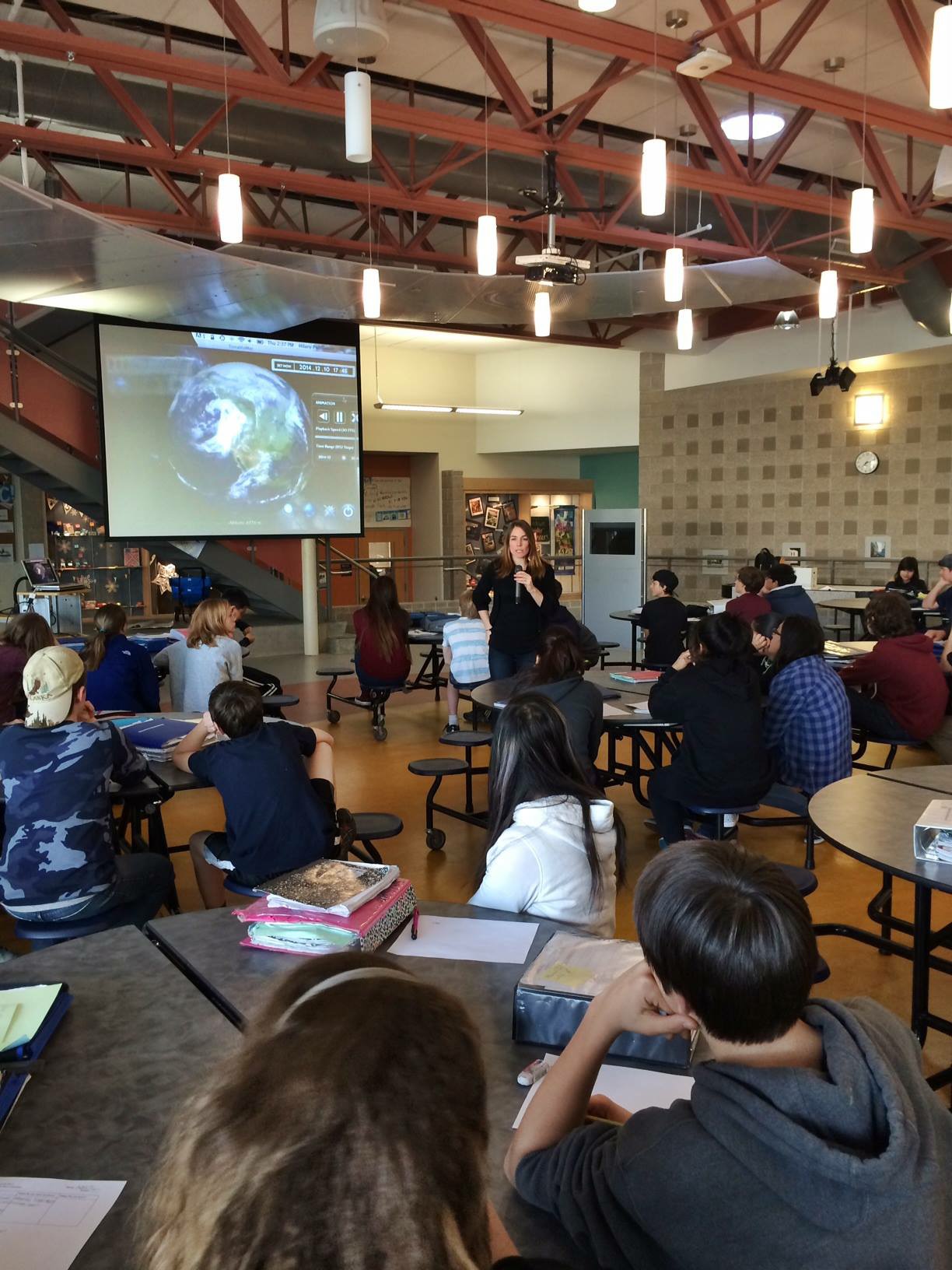 Related topic: STEAM: Art and Design Science.
Related topic: STEAM: Art and Design Science.
The astonishing growth of global game revenues now numbers a population of gamers approaching two billion, nearly 25% of the world’s population. earthDECKS aims to enlist as many of those players as possible in “gaming the future.”
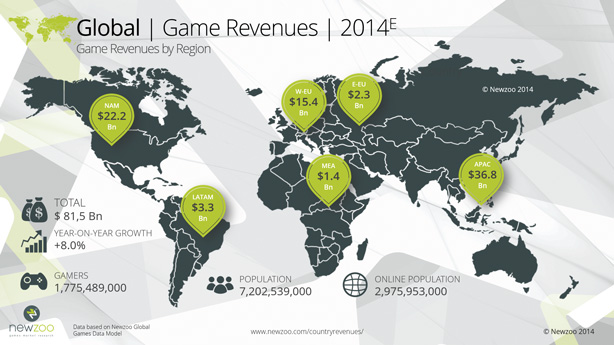 Buckminster Fuller, Irving Janis, and others, provide inspiration for a new approach to the development of learning media. Fuller emphasized that synergy is whole system behavior that cannot be predicted from the behavior of its parts. Synergetics is the dynamics through which synergies are produced.
Buckminster Fuller, Irving Janis, and others, provide inspiration for a new approach to the development of learning media. Fuller emphasized that synergy is whole system behavior that cannot be predicted from the behavior of its parts. Synergetics is the dynamics through which synergies are produced.
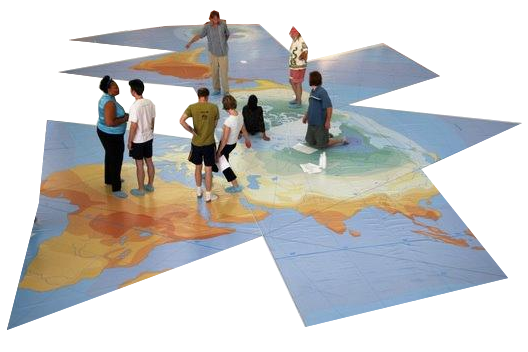 Buckminster Fuller conceived the idea of “design science” (1951), “World Game” (1961), and “Spaceship Earth” (1963). Only today can a new World Game vision be implemented using geo-aware technologies, internet-supported collaboration, mobile ubiquitous computing, and increasingly sophisticated social networks to support coordinated decision-making, innovation, responsible entrepreneurship, and worldwide collaboration. Fuller’s vision “to make the world work for 100% of humanity in the shortest possible time through spontaneous cooperation without ecological offense or disadvantage of anyone” is now the motto of the Buckminster Fuller Institute.
Buckminster Fuller conceived the idea of “design science” (1951), “World Game” (1961), and “Spaceship Earth” (1963). Only today can a new World Game vision be implemented using geo-aware technologies, internet-supported collaboration, mobile ubiquitous computing, and increasingly sophisticated social networks to support coordinated decision-making, innovation, responsible entrepreneurship, and worldwide collaboration. Fuller’s vision “to make the world work for 100% of humanity in the shortest possible time through spontaneous cooperation without ecological offense or disadvantage of anyone” is now the motto of the Buckminster Fuller Institute.
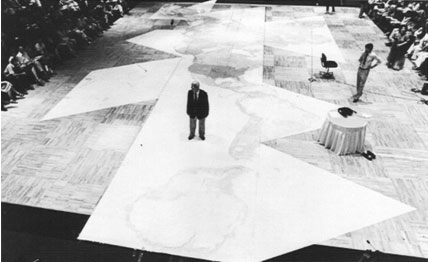 Buckminster Fuller saw “The World [Peace] Game” as an alternative to war games, a simulation where players are actors on a global gameboard (the Dymaxion Map gameboard invented by Buckminster Fuller). Players as problem-solvers learn how equitable distribution of global resources can make a world that works for all. This learning game was designed so students could engage in a global problem-solving simulation about how “to make the world work for 100% of humanity… without ecological offense.” The Game was played in gymnasia with a 75 foot map taped to the gym floor, often using a 35 ft x 75 ft map “gameboard” for this game.
Buckminster Fuller saw “The World [Peace] Game” as an alternative to war games, a simulation where players are actors on a global gameboard (the Dymaxion Map gameboard invented by Buckminster Fuller). Players as problem-solvers learn how equitable distribution of global resources can make a world that works for all. This learning game was designed so students could engage in a global problem-solving simulation about how “to make the world work for 100% of humanity… without ecological offense.” The Game was played in gymnasia with a 75 foot map taped to the gym floor, often using a 35 ft x 75 ft map “gameboard” for this game.
We now live in an era where online gaming is a multi-billion dollar industry that can be directed toward making learning fun.
Interactive media is changing how students engage with learning across disciplines. SOS Explorer™uses the NOAA-developed Terraviz™ visualization engine to create an interactive Earth for a flat screen display that can be projected on walls, computers, and large displays, providing teachers, students, and the public their own personal SOS with access to a library of selected Science On a Sphere® datasets and movies.
Photo: Hilary Peddicord uses SOSx to teach students at Casey Middle School in Boulder, CO.
Tools included in the application allow users to zoom into, probe, and graph the data, and add supplementary material including websites, videos, pictures, and placemarks. In order to make the product more accessible for teachers, NOAA has developed lesson plans and pre-programmed tours through relevant topics.
SOS Explorer™ is an image engine for an online, ad hoc World Game so that all those committed to work for the benefit of all can chart a path toward sustainability for 100% of humanity.
John Hunter has committed his life work to creating a World Peace Game that can engage students in a new approach to learning. In John Hunter’s classroom, students fearlessly set about tackling global problems-and discovering surprising solutions-by playing Hunter’s groundbreaking World Peace Game and associated World Peace Game Foundation. These kids—from high school all the way down to fourth grade, in schools both well-funded and under-resourced—take on the roles of presidents, tribal leaders, diplomats, and military commanders. Through battles and negotiations, standoffs and summits, they strive to resolve a sequence of many-layered, interconnected scenarios, from nuclear proliferation to tribal warfare.
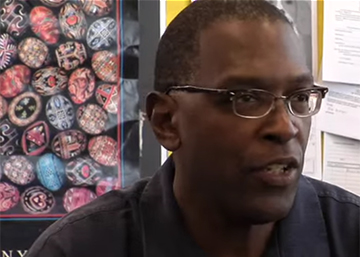 Now, Hunter shares inspiring stories from over thirty years teaching the World Peace Game, revealing the principles of successful collaboration that people of any age can apply anywhere. He offers all of us not only a forward-thinking report from the front lines of American education, but also a generous blueprint for a world that bends toward cooperation, rather than conflict. In this deeply hopeful book, a visionary educator shows us what the future can be. Now he has a book about the World Peace Game curriculum that he’s developed over thirty years.
Now, Hunter shares inspiring stories from over thirty years teaching the World Peace Game, revealing the principles of successful collaboration that people of any age can apply anywhere. He offers all of us not only a forward-thinking report from the front lines of American education, but also a generous blueprint for a world that bends toward cooperation, rather than conflict. In this deeply hopeful book, a visionary educator shows us what the future can be. Now he has a book about the World Peace Game curriculum that he’s developed over thirty years.
John Hunter’s TED talk has had over 1.2 Million views, a tribute to the importance of his work.
![]()
Credits: Game Image Map, NewZoo 2014
Dymaxion Map gameboard: Buckminster Fuller Institute, Vienna, Austria

